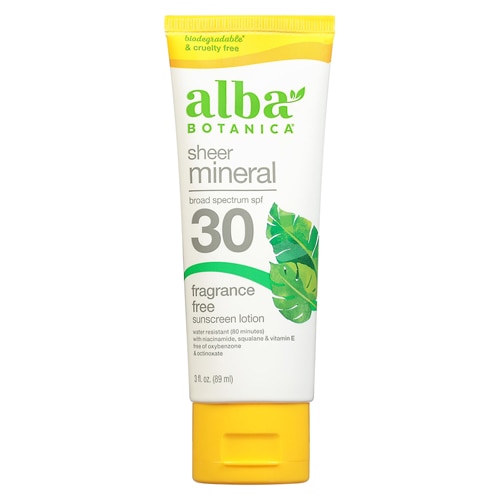Just when you thought it was safe to get back in the water, new research demonstrates that your sunscreen may be damaging coral reefs and even aquatic life. Each year between 4,000-6,000 metric tons (4400-6600 US tons) of sunscreen washes off swimmers and snorkelers into coral reef environments. This leads to significant environmental contamination. At heightened risk are reefs, where the compounds in chemical sunscreens have been found to bleach the reefs and infect the microalgae that the corals rely on for nutrition.
It’s not a pretty picture— up to 10 percent of the world's coral reefs may be threatened by sunscreen induced coral bleaching. And while the use of sunscreen products is now banned in a few popular tourist destinations, more needs to be done to grow awareness of how destructive sunscreens can be.
The first step to becoming more sunscreen savvy is to know what to avoid. The worst offenders are the following four sunscreen ingredients know to cause coral bleaching even at very low concentrations.
- Oxybenzone (benzophenone-3) – a chemical linked to hormone disruption and potentially to cell damage that may lead to skin cancer.
- Butylparaben – Parabens, used as a preservative, mimic estrogen and can act as potential hormone (endocrine) system disruptors.
- Octinoxate (Ethylhexyl methoxycinnamate) – A hormone disruptor whose effects on estrogen can be harmful for humans, wildlife, and the environment.
- 4-methylbenzylidene camphor (4MBC) – A UV filter not approved as an active ingredient for sunscreen in the U.S., but listed as an inactive ingredient in some products. Linked to thyroid toxicity and hormone disruption.
Love the life aquatic
But take heart. Several companies, such as Badger, go to great lengths to make sure their products adhere to the do no harm principle and are safe for you—and the ocean. Here’s what can do to make sure that your sunscreen won’t degrade the marine environment and coral reefs.
Physical sunscreen
Use a physical sunscreen that blocks the sun whose active ingredients are zinc oxide, like Badger's, or titanium dioxide. These powdered minerals settle to the seafloor within a few hours, similar to silt, and become buried in the sediment.
Water resistant sunscreen
Choosing a water resistant sunscreen helps the product stay on your body rather than dissolve into the water.
Biodegradable
Look for a product that has been tested biodegradable—it ensures the product will break down in the water. Companies can play fast and loose with the term, however, so you may have to contact the company for verification.
Bonus tip: Don’t be fooled by a “reef safe” claim. There is no regulation for the term, so it means about as much as the term “natural.” Knowing what ingredients to avoid, and what to seek out, is your best bet. Physical sunscreens are the safest choice for you—and the environment. So do the right sunscreen. Our coral will thank you.




